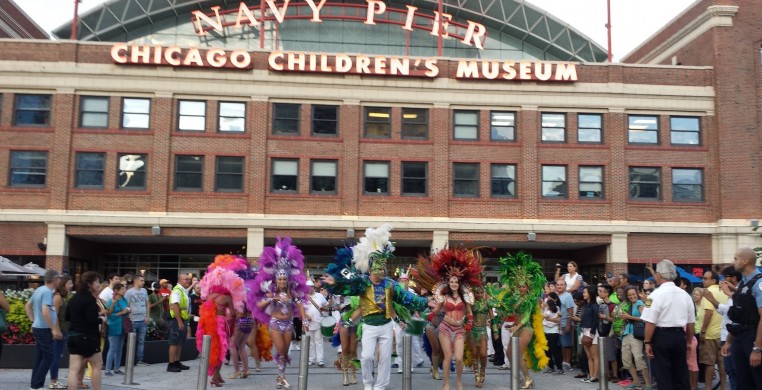Today I taught my Exercise Physiology students the concept of dynamic constancy. Imagine any physiological variable, like body temperature, blood pressure, or heart rate, and one generally accepts certain set values as “normal.” Our bodies like to be 98.6 degrees, 120/80 mmHg, 60-80 beats per minute. These aren’t constants, exactly. There’s an undulating variance to these markers, but, on average, they generally stay the same.
What does this have to do with the Chicago Dancing Festival (CDF)? Don’t worry, I’m getting to that.
This year marks the 10th anniversary of the free Chicago Dancing Festival, in which our city’s biggest and best venues host hoards of dance goers for top notch performances featuring some of our best and some of the world’s brightest in dance. In 10 years, we’ve witnessed extraordinary world premieres like Alexander Ekman’s “Episode 31,” the flawless dancing of the Martha Graham Dance Company and contemporary innovators from New York and around the world. In 10 years, the festival grew and shrank and grew again. It added and subtracted from its formula and tried new things. But generally, on the whole, CDF is predictable. It is dynamically constant.
That’s not a bad thing. CDF is predictable, sure… it’s predictably awesome. I love the semi-corny announcements between pieces. I love the brilliant classical pas de deux (…deux-es?) that pepper the week and the full tilt, full company pieces from our home turf companies. I love that it is (somehow) all free, and exposes novice patrons to great dance as a sort of “try before you buy” teaser. I love the rush of determined dance super fans flooding the Pritzker Pavilion on closing night like it’s Black Friday or the $99 sale at David’s Bridal.
I love all of it, but it’s an audience experience unlike most others. The festival has been criticized (sometimes by me) for its surface-deep curation, lacking representation from artists who lie outside the conventions of western dance forms, and often ignoring big swaths of Chicago’s dance community in favor of bigger names from New York. As the Chicago Dancing Festival came of age it increasingly became “the dancing festival that happens to take place in Chicago.” Last season, exactly zero Chicago-based companies performed on the opening program. While it is not the specific mission of CDF to build an audience base for Chicago companies, it sometimes seemed like a missed opportunity.
While I wouldn’t suppose that this year’s festival was built as a specific response to any of those criticisms, the new Planet Chicago program at Navy Pier addressed them all. Part guided tour, part critical mass, Planet Chicago showed off the new renovations at Navy Pier, which are stunning, and showed off Chicago’s dance scene with a series of pop-up performances scattered about the pier. For the first time ever, an all-Chicago program featured an array of styles representing a variety of cultures. Muntu Dance, Forward Momentum Chicago (a group of children from Chicago Public Schools and the Park Districts) and Gingarte Capoeira Chicago encouraged audience members to come up and dance with them after their pieces, while the feathered headdresses of Chicago Samba’s dancers led the way around the pier in a sort of dance parade. At the foot of the new Ferris wheel, Natya Dance Theatre and friends of the Chicago Human Rhythm Project took center stage as restaurant goers and other visitors to the pier looked on with us. Planet Chicago, though highly planned, felt spontaneous, unpretentious, and different. It brought us closer to dance and dancers, was mildly educational, and it was really, really fun.
As the festival enters its second decade, we must wait and see where the pendulum settles. It remains to be seen whether CDF will continue to push for new programs like Planet Chicago, or if it will revert to the good, if formulaic, dynamic constancy we’ve seen in the past. It might not depend on the response of the dance community, but on that of those patrons who fought their way into the pavilion Saturday night, only to retreat during the last piece before it ended (Hubbard Street Dance Chicago’s performance of the brilliant, though challenging “One Flat Thing, reproduced” by William Forsythe). I guess what I’m saying is, the Chicago Dancing Festival isn’t for us, the dance community, any more than Medieval Times is for equestrians. Pushing CDF audiences too far might ostracize them, or give them a view of dance they don't want, or frankly, need. Recognizing this, it becomes more possible for the experienced dance patron to let down defenses and simply enjoy phenomenal dancing by companies we might not otherwise be able to afford or have access to. In that regard, CDF has won, and hopefully will keep on winning.

